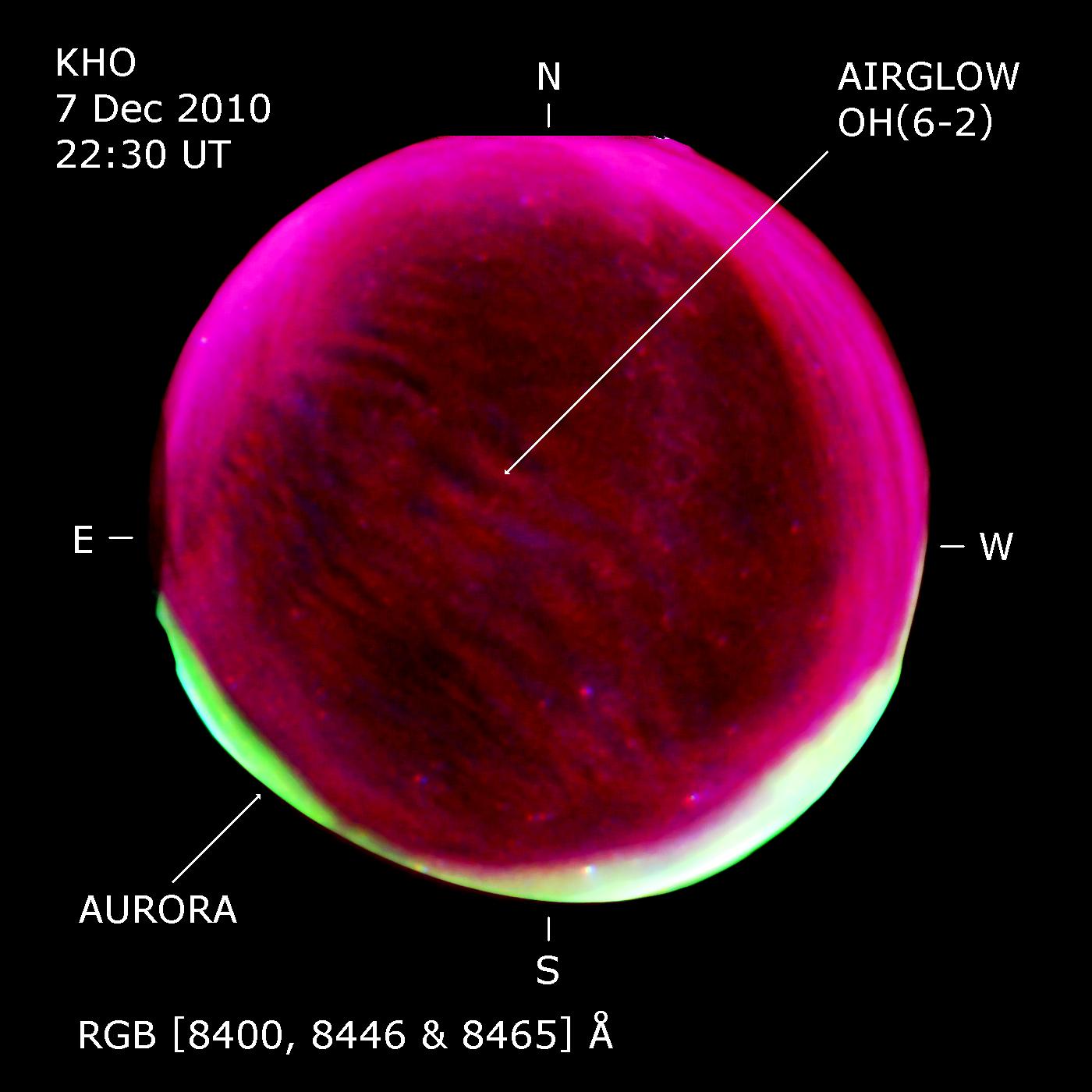| ☰ Menu | First all-sky image of OH(6-2) airglow |

|
Composite color all-sky image of aurora and airglow observed 22:30 UT from KHO 7th December 2010. Analysis and text: F. Sigernes @UNIS January 2011.
The above image is the first result from our new near infrared all-sky hydroxyl airglow imager,
named KeoSentry 4iX.
North is up in the image and the field of view is 180 degrees (fish eye). The exposure time is 2 minutes.
The hydroxyl (OH) airglow is an emitting layer produced by chemical reactions between mainly hydrogen (H) and ozone (O3) or hydroperoxy (HO2) radicals and atomic oxygen (O). The average altitude of the layer is ~87 km with a thickness of ~8 km. This region of the upper atmosphere is called the mesopause. The layer is very weak in intensity, not visible to the human eye at ground level. Three of the six wavelength channels of the instrument are used to create the RGB color composite. The Green color is aurora, located in the southern part of the image. The auroral wavelength is 8446Å from atomic oxygen (OI). The deep red and faint blue colored emissions with wavelike structure are from the diatomic OH(6-2) emission band of airglow. The Red channel is centered at wavelength 8400Å close to the P1(2) emission line of the OH(6-2) band. Correspondingly, the Blue channel center is at 8465Å close to the P1(4) line. The pink colored rim in the northern horizon is due to scattered light from low altitude clouds. The 16-bit raw images from each channel are processed by first subtracting the dark image. Secondly, a simple median filter is applied to remove the brightest stars. Finally, the images are scaled by identical threshold values in order to generate the above RGB composite (24-bit color image). The structure / pattern across the entire sky are caused by gravity waves that pass through and breaks at the altitude of the emitting OH layer (like ocean waves that break on a beach). The data will give us in the years to come together with our temperature analysis from the Silver Bullet spectrometer, a better understanding on how the weather behaves high up the mesosphere, and how it links to what is going on further down in the atmosphere. This instrument is part of the project InfraSpace funded by the Norwegian Research Council, project number 195385. The PI of the InfraSpace project is Prof. Dag Lorentzen, and the Co-I for the Airglow Imager is Prof. Fred Sigernes, both at UNIS. Data handling and analysis will be conducted by Post Doc Margit Dyrland and future PhD students. |